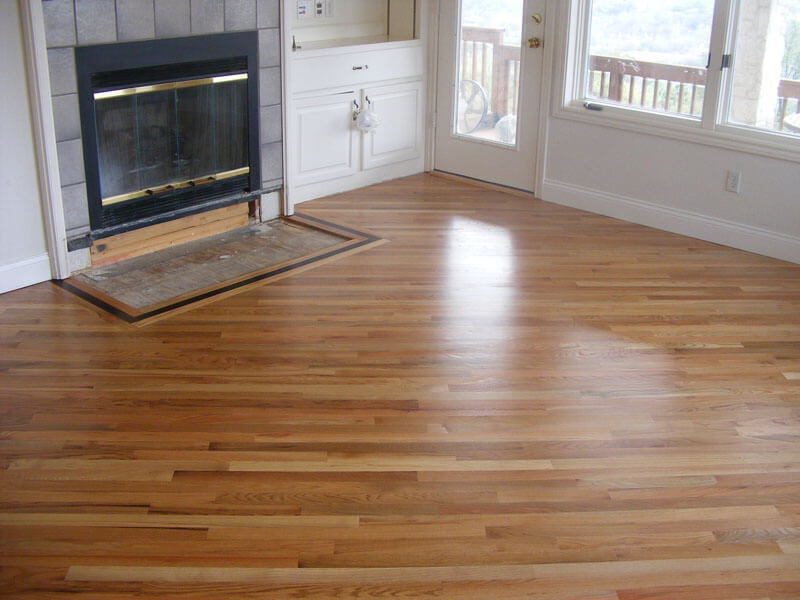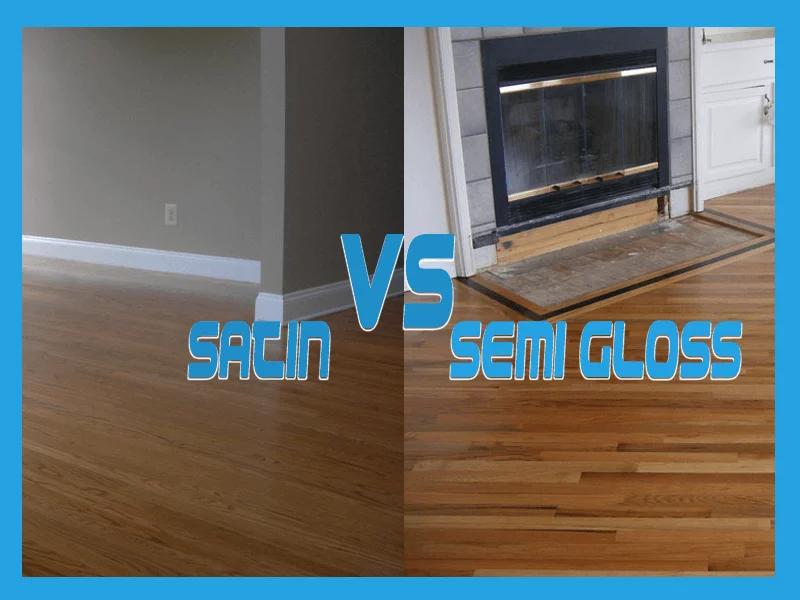If you’re looking to paint the walls of your home, you might be wondering what paint finish to use. While there are multiple finishes to choose from, satin and semi-gloss paints are the most popular today.
When it comes to paint finishes, the main difference between satin vs semi gloss vs gloss paint is how shiny the surface will be when dry. Today we look at satin vs semi-gloss paint finishes and their main differences.
semi-gloss vs satin paint
Both semi-gloss and satin paint finishes have a glossy sheen to them, but semi-gloss is much shinier than satin. It looks wet more often than not, while satin tends to have a more matte appearance.
Because of its shine level, semi-gloss has a tendency to show fingerprints; it’s not as clean-looking as satin. Satin paint is preferred for furniture pieces in high traffic areas like bedrooms or living rooms because it hides fingerprints better than semi-gloss does.
In addition, satin is often used on walls instead of semi-gloss because it doesn’t get as dirty looking over time. One other difference between these two paints is that semi-gloss takes longer to dry than satin.
This means you can move around things once you’ve painted your piece with semi-gloss (like a chair), but if you try moving things before your piece dries with satin paint, there could be a noticeable mark left behind from where your object was sitting.
When should you use semi-gloss paint?
Semi-gloss paint is great for walls in rooms where you’ll want a paint finish that shows off texture (e.g., raw wood paneling or natural stone) or where you want to take advantage of special lighting effects such as candlelight, which can make semi-gloss paint look slightly more metallic.

If your main concern is a clean, glossy finish with no brush marks (as in all types of painting), then there’s no reason to use semi-gloss. That being said, it’s rare for somebody to go wrong with semi-gloss.
It’s by far the most common type of wall paint finish and can be used for almost every room in your home. For painted furniture or cabinets (see Satin or semi-gloss for cabinets), semi-gloss will give you a nice sheen while still allowing you to see some of the wood grain underneath. What’s the best sheen for a dining table?
This makes it an excellent choice for kitchens and bathrooms. If you’re painting furniture, semi-gloss gives a very attractive satin finish without going too shiny. This makes it a popular choice for bedroom dressers and dining room tables.
Keep in mind that because semigloss paint does not hide imperfections as well as flat or eggshell paints do, if you have nicks or dings in your wood surfaces already they will show up prominently against semi-gloss paint.
If possible, touch up these blemishes before applying any type of protective coating like a varnish over them. The same goes for areas with existing scuffs and scrapes—they’ll pop out even more under semi-gloss than they would under flat finishes like eggshells.
When should you use satin paint?
An eggshell finish, which is also referred to as satin or low sheen paint, has a glossy appearance that’s just enough to add depth to walls without looking too bold. This kind of finish is perfect for small bedrooms with large windows because it helps keep light from getting lost.
On higher ceilings like those in great rooms, an eggshell finish will make a room feel larger. The same finish can be used on trim throughout a home if you’re hesitant about moving all the way up to semi-gloss paint.

Depending on your decorating style, choose either an opaque or semi-transparent shade. Opaque colors are best for traditional spaces while semi-transparent paints work well in modern interiors.
Regardless of whether you go with an opaque or semi-transparent color, we recommend using a satin finish over flat paint since it adds depth and character to your space. It’s also easier to clean and less likely to show wear and tear than other types of paint.
If you have children or pets at home, consider going with a high-quality latex satin finish since it’s more durable than oil-based paints. For more information on choosing between these two options, read our guide here.
Is satin better than semi-gloss?
Many people opt for satin or semi-gloss finishes because they’re less of a fingerprint magnet than gloss. But here’s something to think about: Every finish is a matter of preference. There are pros and cons to each, but you should always go with what feels right for your space.
If you want that wow factor that only a shiny high gloss finish can give, then get it! And if your thing is more softness and subtlety—which often comes from satin or semi-gloss finish—then go with that instead. It all comes down to personal style.

One thing to note, though: High-gloss paint tends to look its best in small doses. If you plan on covering most of your walls in glossy paint, consider using a matte white or cream as an accent wall so it doesn’t feel like every room has been shrink-wrapped.
Is semi-gloss shinier than satin?
There are many differences between semi-gloss and satin paint but most of them are a matter of opinion. The main difference is that semi-gloss has a shinier finish than satin and it is more reflective because it contains more metallic particles in its formula.
Satin paint, on the other hand, gives a softer look to walls because it is not as shiny or reflective as semi-gloss paint. Semi-gloss is also easier to clean because it repels dirt and dust better than satin. Satin on furniture can be polished with a soft cloth.
On painted surfaces, you can use regular cleaners for normal cleaning tasks like dusting or vacuuming, although if you have used satin for your floors then you should use a cleaner designed specifically for those surfaces.
Satin paint usually costs less than semi-gloss so if money is an issue then it may be best to choose that option instead of paying extra for a shinier-looking finish.
Is satin or semi-gloss easier to clean?
When you’re choosing between satin and semi-gloss paint, your main concern is probably how shiny each surface will be. On top of that, you might also be wondering which surface is easiest to clean. So which one wins in terms of cleaning?
As stated earlier semi-gloss is easier to clean because it has a smoother finish than satin paint. This means it doesn’t have as many tiny grooves for dirt to get stuck in, so it can be cleaned more easily with a simple rag or sponge.
The same can’t be said for satin paint though because its rough texture makes it harder to remove stains. If you need a high shine on your walls but don’t want them to be too slippery, then satin paint could be right for you. If however, you want something easier to keep clean, then choose semi-gloss instead.
Is semi-gloss tougher than satin?
In most cases, semi-gloss is tougher than satin paint. This has to do with its resistance to stains and fading. However, satin can be more durable depending on how it’s applied and if it’s been sheen-enhanced or not. By sheen enhancing, we mean adding a polyurethane coating that increases sheen while increasing protection.
final verdict on satin vs semi-gloss paint finishes
The difference between satin and semi-gloss paints is minimal. Semi-gloss paints are slightly less reflective than satin paints, but that’s about it.
When deciding between a satin or semi-gloss finish, keep in mind what you want your room to look like: If you have a large amount of sunlight in your home or office, glossy finishes might be too much for you.
On the other hand, if you prefer a more toned-down space with less reflective light, go with a satin finish. Satins tend to help keep rooms darker and give them more contrast while brightening up colors—which makes them perfect for bedrooms and kids’ rooms!

